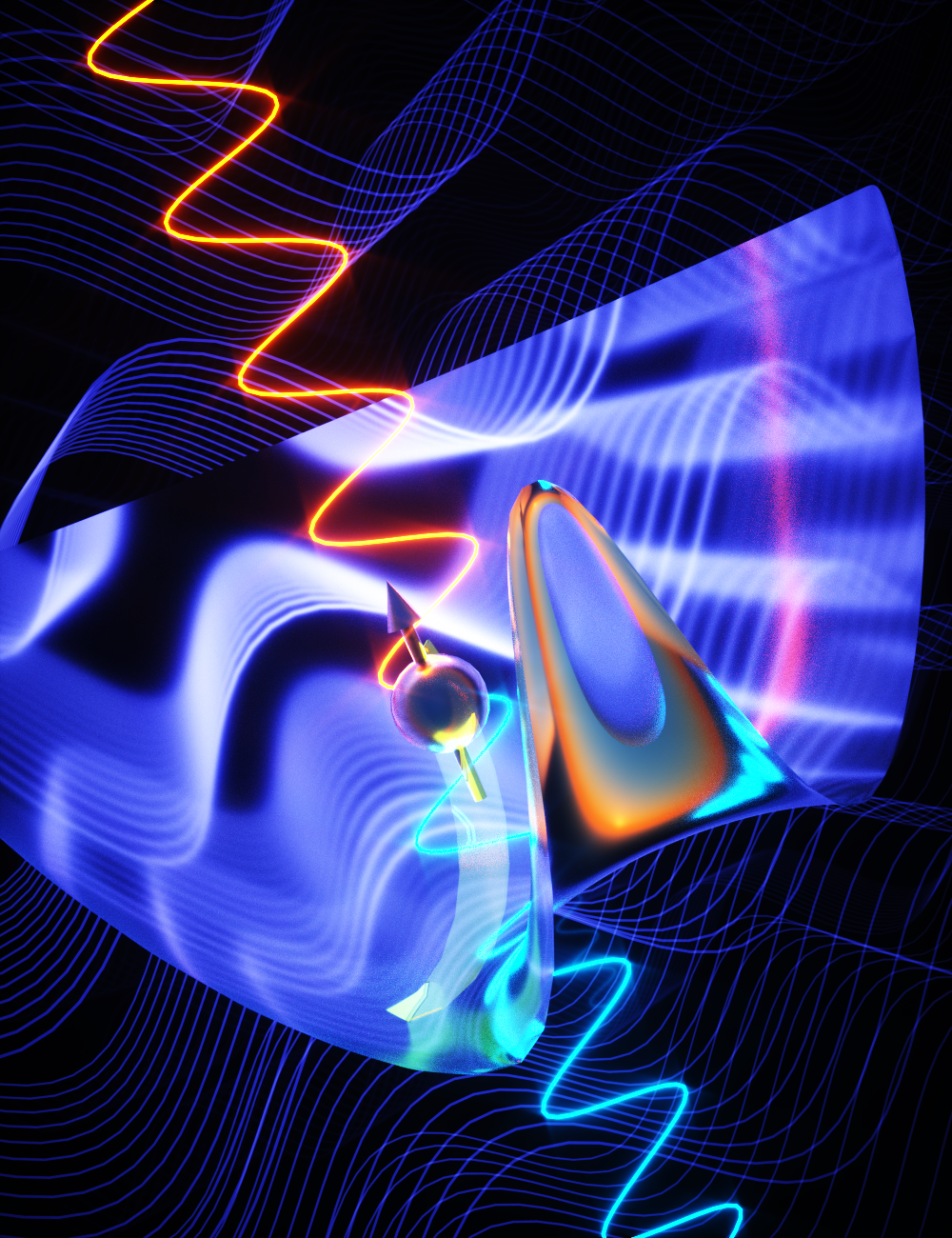Driven Out of Equilibrium
Shining New Light on Quantum Matter
Prineha Narang
Professor, Physical Sciences & Electrical and Computer Engineering
University of California - Los Angeles
Sponsored by PSW Science Member John Downing
About the Lecture

Nonequilibrium systems – systems not in thermodynamic equilibrium, frequently driven by outside forces – range from gas giants in the outer solar system to living organisms and quantized particles. Counter to the notion that the physical world exists in a state of equilibrium, nonequilibrium dynamics play key roles in the evolution of physical processes and their interaction with their surroundings. Understanding how collective nonequilibrium behavior emerges from the fundamental interactions of individual constituents remains a frontier challenge in physics that underpins functional characteristics of complex physical events.
Advancing our understanding of the behavior of quantum matter away from equilibrium is essential to understanding how materials, physical and biological processes work, as well as to building next-generation technologies for an energy-efficient and interconnected society. Nonequilibrium quantum systems are complex and pose formidable theoretical and experimental challenges, thus representing a vast frontier in the panorama of modern physical sciences. Predicting the behavior of nonequilibrium quantum systems, from first principles, is a grand challenge. Research inspired by this challenge focuses on how quantum systems behave away from equilibrium, and how to harness these effects.
This lecture will present advances in theoretical understanding of and computational approaches to describe excited-states in quantum matter, and on predicting emergent states created by strongly non-equilibrium external drives. Understanding the role of such nonequilibrium light-matter interactions is of paramount importance to fields of study across condensed matter physics, quantum optics, and quantum chemistry. The simultaneous contribution of processes that occur on many time and length-scales has remained elusive for state-of-the-art calculations and model Hamiltonian approaches alike, necessitating the development of new methods.
This lecture will discuss the latest results at the intersection of ab initio cavity quantum-electrodynamics and electronic structure methods to treat electrons, photons and phonons on the same quantized footing, and accessing new observables in nonequilibrium light-matter coupling. This approach can access the coupled dynamics of electronic spins, nuclei, phonons and photons, essential to the latest work on driving quantum systems far out-of-equilibrium to control the coupled electronic and vibrational degrees-of-freedom. Looking ahead, controlling such physical systems out-of-equilibrium will enable new medical imaging and diagnostic tools, quantum detectors for climate monitoring and adaptation, and discoveries in fusion science advancing progress towards a clean-energy powered global society.
About the Speaker

Prineha Narang is Professor in Physical Sciences and in Electrical and Computer Engineering at the University of California, Los Angeles (UCLA) where she holds the Howard Reiss Chair. She also currently holds an appointment from the US State Department as US Science Envoy. Before joining the UCLA faculty, Prinhea was an Assistant Professor of Computational Materials Science at Harvard University.
Narang works on theoretical and computational quantum materials, non-equilibrium dynamics, and transport in quantum matter.
Among many honors and awards for her work, she is the recipient of a Guggenheim Fellowship, the Maria Goeppert Mayer Award from the American Physical Society, an Outstanding Early Career Investigator Award from the Materials Research Society, the Mildred Dresselhaus Prize, a Bessel Research Award from the Alexander von Humboldt Foundation, a Max Planck Award from the Max Planck Society, the IUPAP Young Scientist Prize in Computational Physics, an NSF CAREER Award, the Moore Inventor Fellow award of the Gordon and Betty Moore Foundation, the CIFAR Azrieli Global Scholar award of the Canadian Institute for Advanced Research, and the Top Innovator award of MIT Tech Review.
Narang has organized and chaired numerous symposia and workshops and serves as an Associate Editor at ACS Nano, Associate Editor at Applied Physics Letters, and has a leadership role in APS’ Division of Materials Physics.
Narang earned an MS and a PhD in Applied Physics at Caltech.
Minutes
On October 20, 2023, in the Powell Auditorium of the Cosmos Club in Washington, DC and by live stream to the PSW Science YouTube channel, President Larry Millstein called the 2,483rd meeting of the Society to order at 8:06 PM Eastern Time. He welcomed attendees, thanked sponsors, and announced new members. Mark Clampin then read minutes of the previous meeting and the lecture by Laurie Locascio on the National Institute of Standards and Technology, prepared by Recording Secretary Cameo Lance.
President Millstein then introduced the speaker for the evening, Prineha (Pri) Narang and her lecture “Driven Out of Equilibrium: Shining New Light on Quantum Matter."
Narang's presentation focused on nonequilibrium states of molecules and materials, as probed by laser excitation. This mode of excitation enables one to explore specific pathways through the potential or free-energy landscape of a material, vs. non-selective thermal excitation.
The central theme of her lecture was her work on the study of photon-matter interactions in cases of very strong coupling. This work led her to identify systems that exhibit “photonic quasiparticles.” In those cases, a material system that would usually be described in terms of an electronic state with many virtual excitations induced by an intense laser field, can instead be viewed as a strongly-coupled radiation/matter state with a small number of photonic quasiparticle excitations.
In the limit of laser intensities, this central idea reduces to the Jaynes-Cummings model of quantum optics, in which states of atoms and states of the radiation field are strongly coupled by resonant light-matter interactions, specifically when the photon energy is near the difference in energies of two quantum states of the atom. A striking aspect of Narang's work is that she has been able to demonstrate strong radiation coupling with elementary excitations of materials, such as magnons, polarons, and Cooper pairs.
One demonstrated example of this is manipulation of magnetic order in an antiferromagnet through lattice vibrations excited by a laser. In the ground state of an antiferromagnet, electron spins are oppositely paired. Laser-induced shaking of the lattice induces a ferrimagnetic moment that oscillates at very high speed. Other recent experiments of this type have demonstrated phonon-driven superconductivity and ferro electricity, magnetically-dressed vibrational excitation and strain-driven topological symmetry breaking.
Narang has found that familiar opto-magnetic phenomena, like the Faraday and Kerr effects, can have “phono-magnetic” counterparts induced by phonons generated by laser excitation. For example, in inverse phono-magnetic effects the phonon modes act as an effective magnetic field on the spins in the material. This phono-magnetic field induces a “phonon inverse Faraday effect.”
The phono-magnetic effect is not due to the presence of an actual magnetic field, but rather an electron spin correlation effect. Nevertheless, it can lead to spin polarization in solids of the same type as that induced by strong magnetic fields. Narang and her colleagues predict that an effective field, equivalent to a magnetic field of over 100 Tesla, can possibly be generated that polarize the spins of 4f electrons in lanthanide material. Another example of such a hybrid approach is the magnetic infrared resonant Raman effect, made possible by interaction of magnons with Raman-active phonons.
The modification of bulk magnetic properties by light has been of great interest, and a recent collaboration of Narang's group with an experimental group in Hamburg, Germany has shown laser manipulation of the crystal lattice of YTiO3 (yttrium titanate) can alter its ferromagnetism.
Narang discussed examples of condensed-matter analogues of some of the constructs of high-energy physics. She has collaborated with experimentalists to demonstrate the existence of Higgs- and Goldstone-like phonon modes in lanthanum tritelluride (it’s always found in the very last place you look!).
She also discussed proposals to realize axion fields in topological insulators. The axion, named by physicist Frank Wilczek after a brand of laundry detergent, is a hypothetical fundamental particle that has yet to be observed. Its existence would account for an unexplained symmetry that is observed in the Standard Model of particle physics. Some quasiparticles in certain materials such as strong topological insulators seem to be described by axion-like equations, and Narang discussed the prospect of using axion electrodynamics for next-generation devices and even in searches for real axions as a possible constituent of dark matter!
After the lecture there was a question and answer period. Several questioners asked about implications of the Higgs, Goldstone and axion work for fundamental physics. Narang said that no certain outcomes can be stated, but it is striking some new constructs of the Standard Model are appearing in condensed matter systems, and training a new generation of physicists!
After the question and answer period, President Millstein thanked the speaker, announced up-coming lectures, thanked volunteers, and asked everyone interested in helping out to get in touch with him He adjourned the meeting at 9:50 p.m.
Temperature in Washington, DC: 68 degrees F
Weather: Mostly cloudy
Live Audience: 54 in the Powell Auditorium and 19 on the YouTube live stream for a total in-person attendance of 73.
Views of the recording on the PSW Science YouTube Channel in the first two weeks: 765
Respectfully submitted,
Robert Thompson and Charles Clark
on behalf of Recording Secretary Cameo Lance